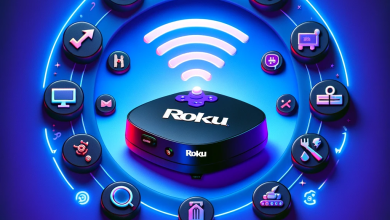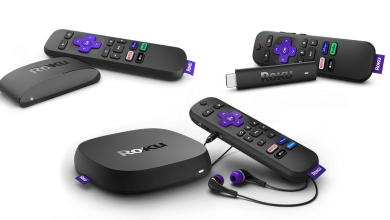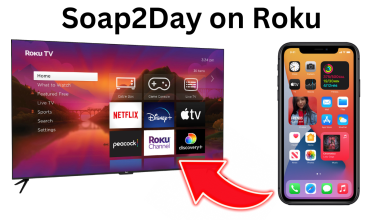Airplay Not Working on Roku? Try these fixes
Roku AirPlay will not work due to network issues, or as a result of corrupt firmware on the router. Try resetting the router, as it will clear out any networking or firmware issues, and thus resolve the problem.
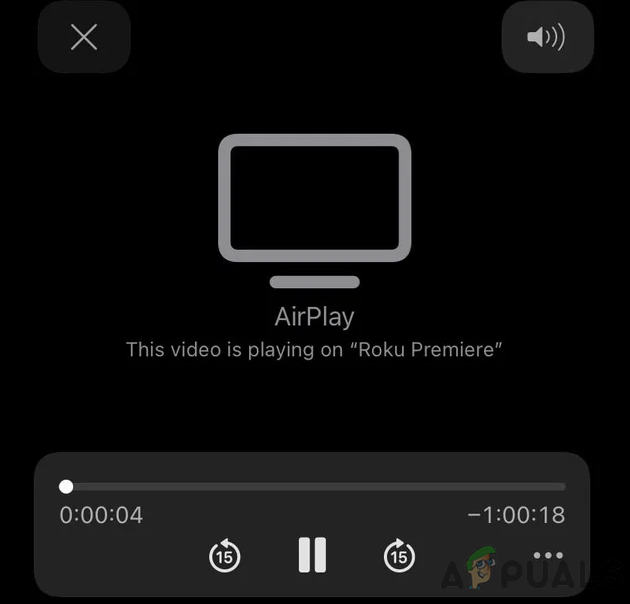
Before starting the troubleshooting process, ensure that Airplay is supported on your Roku device or TV.
1. Disable the VPN on the casting device, if applicable.
AirPlay cannot be used on a Roku device if the casting device, such as an iPhone, is connected to a VPN. This is because the VPN redirects web traffic, making it impossible for AirPlay to locate the Roku device or cast to it.
To resolve this, simply disable the VPN on the casting device if it’s enabled.
If you are using an app, use that app to disable the VPN. To disable the VPN on an iPhone:
- Navigate to Settings > General > VPN.
- Disable the VPN and check if the Roku is using AirPlay.
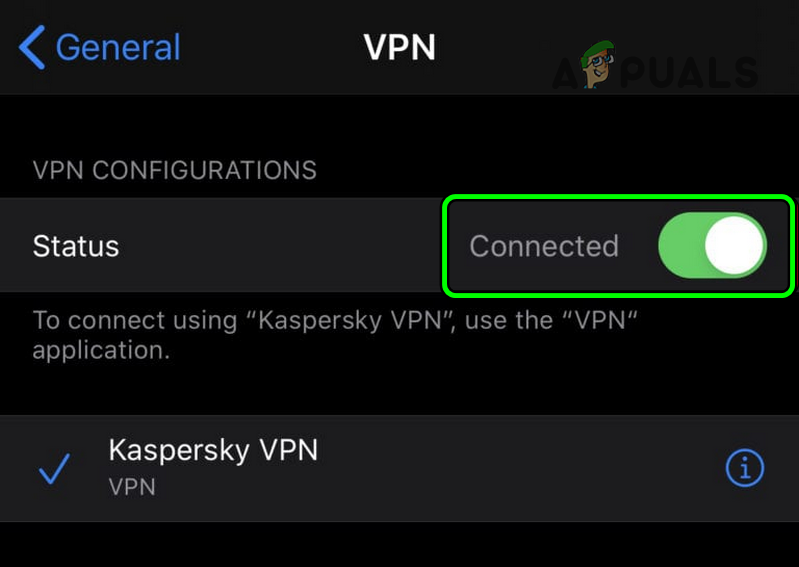
Disable VPN in iPhone Settings
2. Check the network connection in Roku.
The network modules of the Roku device will not be able to communicate with AirPlay if there is any network inconsistency or misconfiguration.
In this case, checking the network connection in the Roku settings will overwrite the invalid cache and solve the problem.
- Head to Settings > Network.

Open Network in the Roku Device Settings - Select “Check Connection” and verify if the Roku Airplay is working correctly.

Check Connection in the Roku Network Settings
3. Restart the Roku and other devices.
This issue can occur due to an error in the operational memory of Roku or related devices such as a phone, router, TV, etc. Restarting these devices will reinitialize their related modules with the default state, thus solving the problem.
- Go to Roku Settings > System > Power > System Restart.
- Select ‘Restart,’ and upon restarting, open the Apple Airplay and HomeKit Settings.
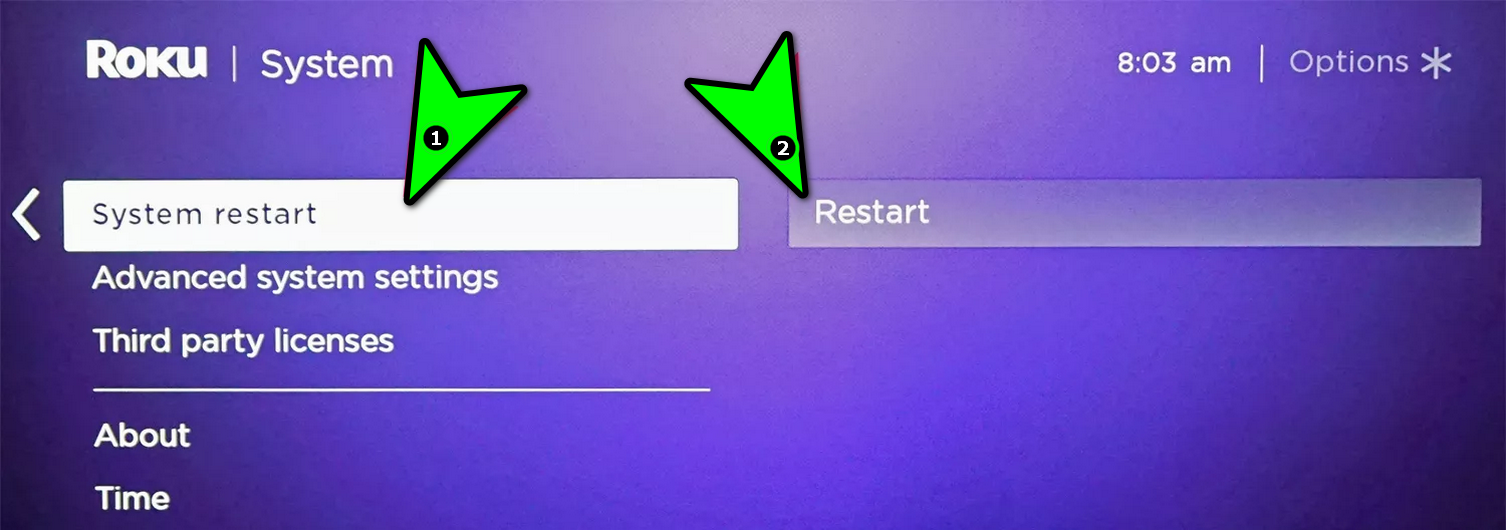
Restart the Roku Device Through the Power Menu - Enable the setting (if disabled) and check if Airplay is operating correctly.
- If this doesn’t work, power off all the related devices (Roku, phone, TV, router, etc.) and unplug their power cables from their sources. Also, remove the Roku stick from the TV.
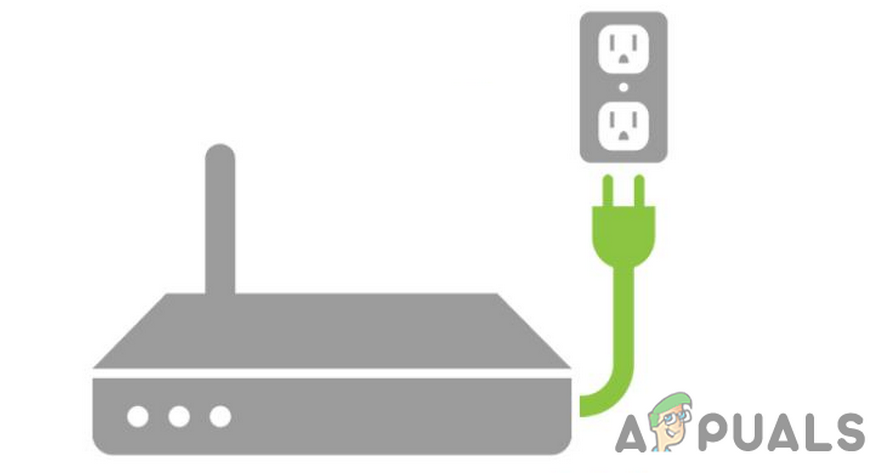
Unplug Your Router from the Power Source - Wait for 10 minutes, and power on the devices after reconnecting the power cables.
- Please reinsert the Roku stick into the TV (if applicable) and check if the Airplay issue has been resolved.
- If this doesn’t work, check whether leaving the devices unplugged overnight solves the problem.
4. Re-Enable Airplay on the Roku Device
If you find that Airplay is not functioning on your Roku device, it could be because the components associated with Airplay are in an error state and, as a result, are not compatible with the device you’re trying to cast from.
A potential solution for this issue is to disable and then re-enable Airplay on your Roku device. This action will essentially refresh the Airplay components, potentially resolving the problem.
- On your Roku device, go to Settings > Apple Airplay and HomeKit > Airplay.
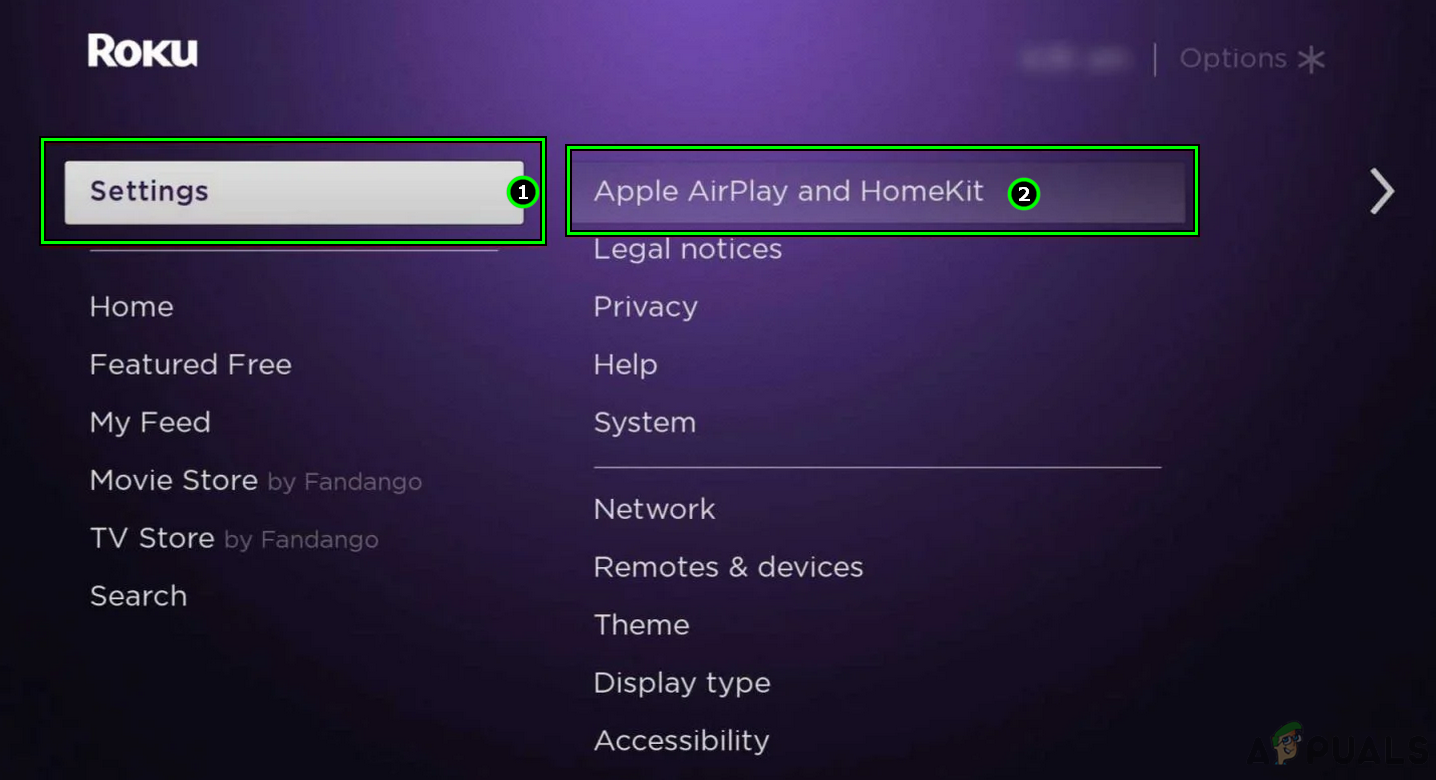
Open Apple Airplay and HomeKit in the Roku Settings - Disable Airplay and restart the Roku device through the power menu.

Enable Airplay in the Roku Device Settings - Enable AirPlay, and check whether it is working on Roku.
5. Re-Enable Device Connect on the Roku Device
If you are experiencing problems with Airplay on your Roku device, it may be due to the Device Connect feature. This feature, which not all Roku devices possess, manages the settings and protocols that allow your Roku to accept a casting connection from another device on the same local network.
If any of these settings or protocols become invalid or corrupted, this could disrupt AirPlay functionality. A potential solution to this issue is to disable and then re-enable the Device Connect feature on your Roku. This process can effectively reset the feature, potentially fixing any issues and allowing AirPlay to work properly again.
- On your Roku, navigate to Settings > System > Advance Settings > Device Connect.

Open Advanced System Settings on the Roku Device - Disable the Device Connect option and restart the Roku device.

Open Device Connect in the Roku’s Advanced System Settings - Upon restarting, enable the Device Connect and check if AirPlay is operating correctly with Roku.
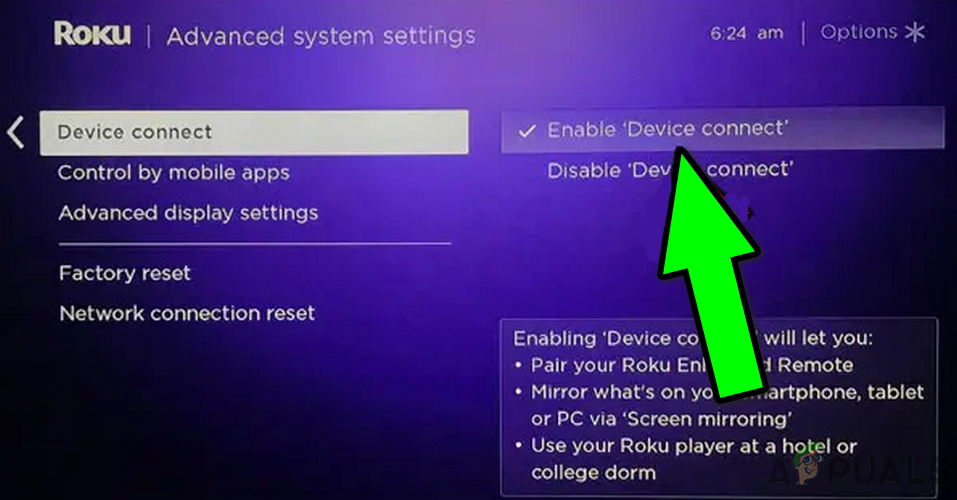
Enable and Disable Device Connect in the Roku Device Settings
6. Update the Firmware of the Roku Device
The Roku device with outdated firmware will not support the latest networking protocols used by your device, causing the problem. Furthermore, a bug in the outdated firmware of the Roku device may also lead to issues. In any case, updating the firmware of the Roku device will resolve the problem.
- Steer to Roku Settings > System > System Update.
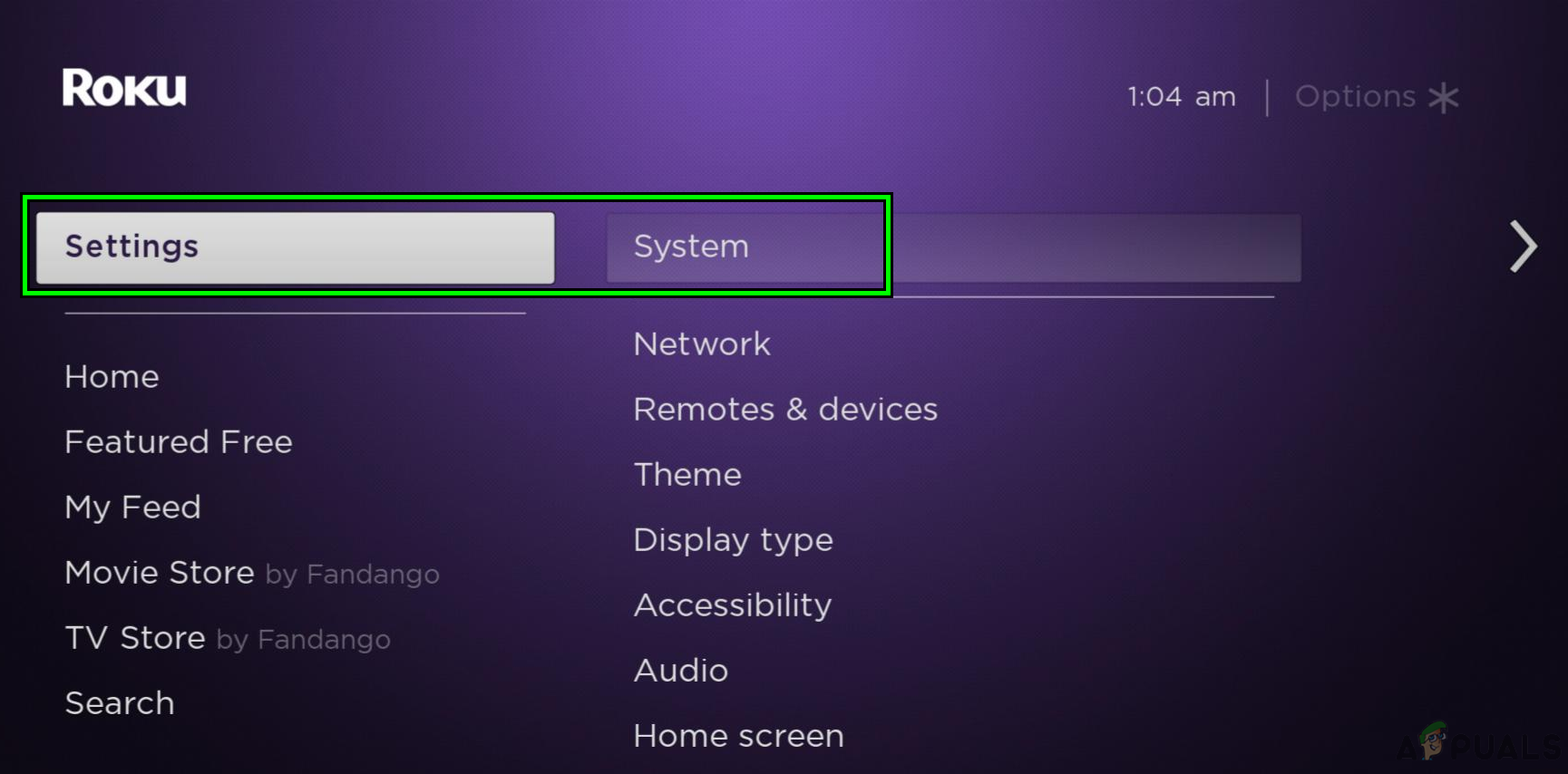
Open System in the Roku Device Settings - Click on Check Now and install the update (if shown).

Open System Update in the Roku Device Settings - Restart the Roku device through the device’s power menu and see if the Roku Airplay is functioning properly.
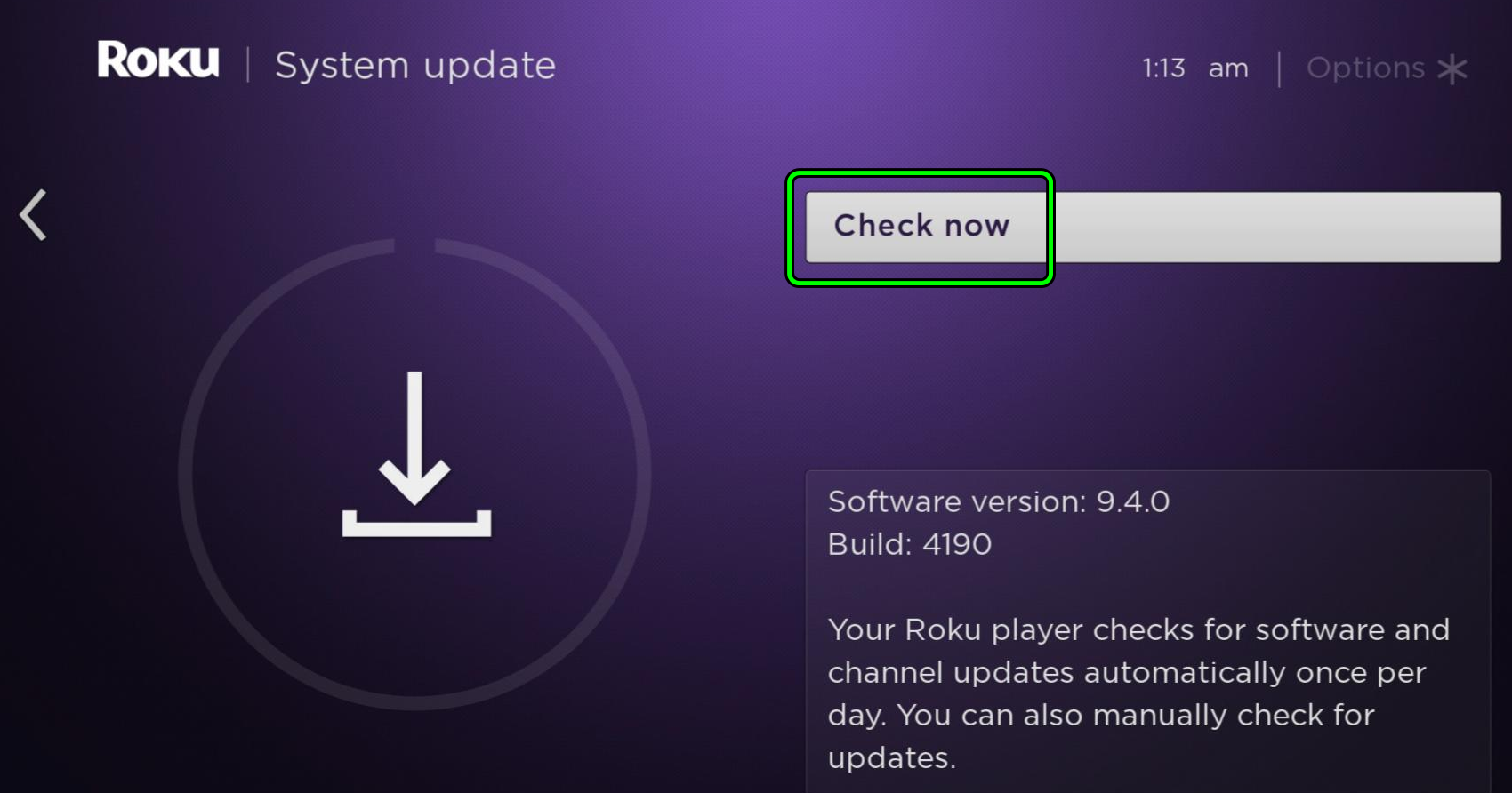
Check for System Updates on the Roku Device - If this didn’t work, check whether updating your TV‘s firmware resolves the issue.
7. Enable Local Network Access to the Roku App
The casting device will not be able to cast content to the Roku device using AirPlay if the Local Network Access of the Roku app is disabled on your Apple device. The issue will occur even if you are not casting through the app, but have it installed on your Apple device for another purpose (such as a remote for the Roku device).
To solve this, enable the Local Network Access of the Roku app. To enable Local Network Access for the Roku app on an iPhone:
- Go to iPhone Settings > Roku > Local Network Access.
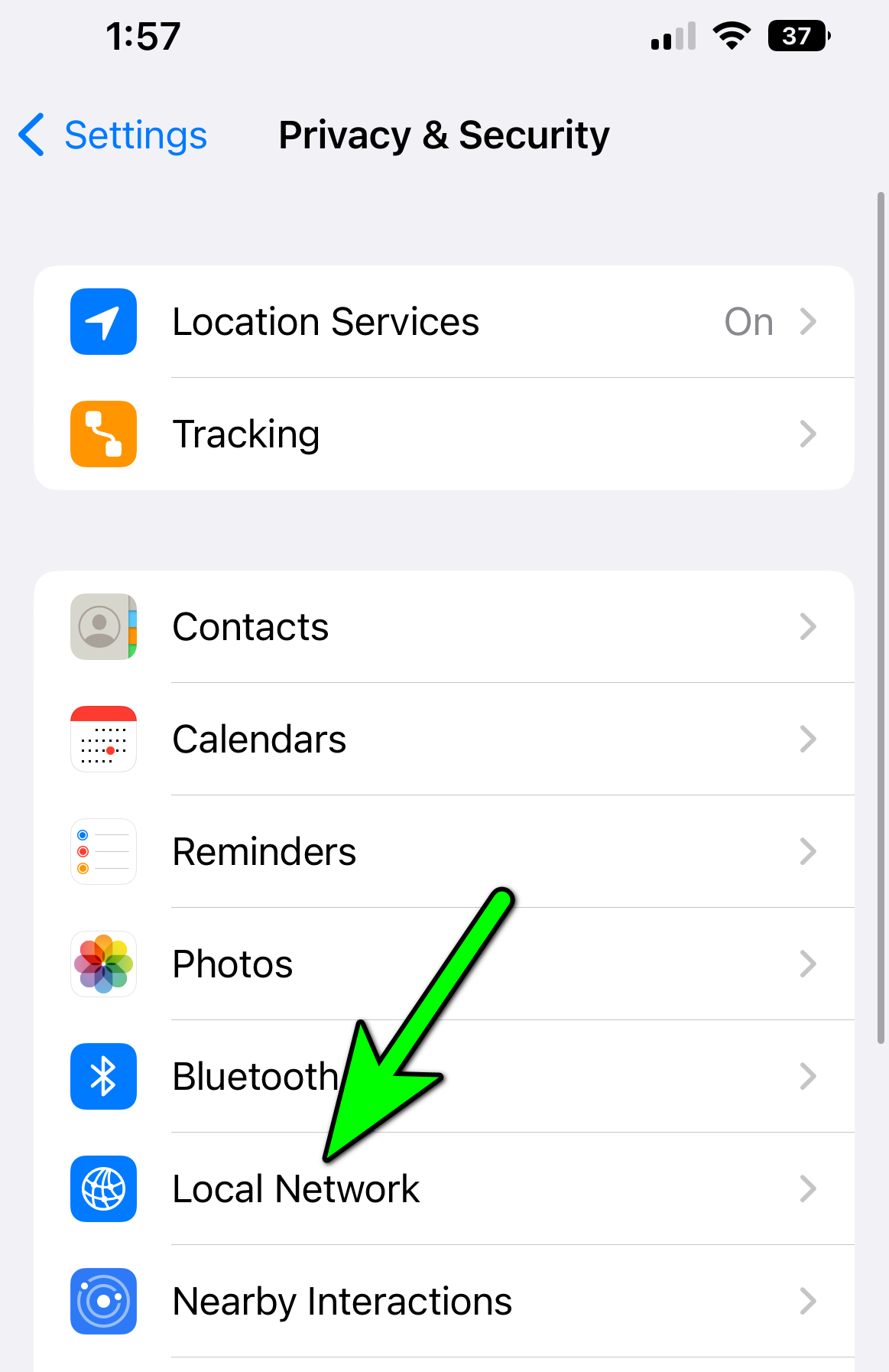
Open Local Network Access in the iPhone Privacy Settings - Enable Local Network Access and restart the phone. Check if the Airplay problem is resolved.
8. Reset the Paired Devices in Roku Settings
If the pairing between your casting device and Roku is no longer valid, communication between the devices will be disrupted, causing a problem. To fix this, reset the Paired Devices in the Roku device’s settings, which will renew the pairing profiles and resolve the issue.
- Navigate to Roku Settings > Apple Airplay and HomeKit > Require Code.

Open Require Code in Roku Device’s Airplay Settings - Select Reset Paired Devices and restart the Roku device.
- Enable Airplay on Roku and check if it is operating correctly.
9. Remove the Roku device from your Apple account.
If AirPlay isn’t working with your Roku, it might be due to an older Roku device that is still associated with your Apple account. This could cause some interference, as the device you are trying to cast from may attempt to connect with the old Roku device that is no longer in use. To address this, you will need to remove the outdated Roku device from your Apple account.
- Navigate to Settings > Apple ID.
- Locate and remove the Roku device.

Open Your Apple ID in the iPhone Settings - Restart your devices and go to Roku Settings > Apple Airplay and HomeKit.
- Enable Airplay and see if the Roku Airplay is working normally.
Tip: If the issue occurs with a particular app, check whether reinstalling that app resolves the problem.
10. Disable Fast Start in the Roku device’s settings.
Fast Start keeps the main board of the Roku device powered on, even when the device is turned off. Due to this, an invalid cache entry causing the Airplay issue will persist after multiple restarts, as the cache will fail to reset. To resolve this, disable Fast Start on your Roku device.
- Navigate to Roku Settings > System > Power > Fast Start.
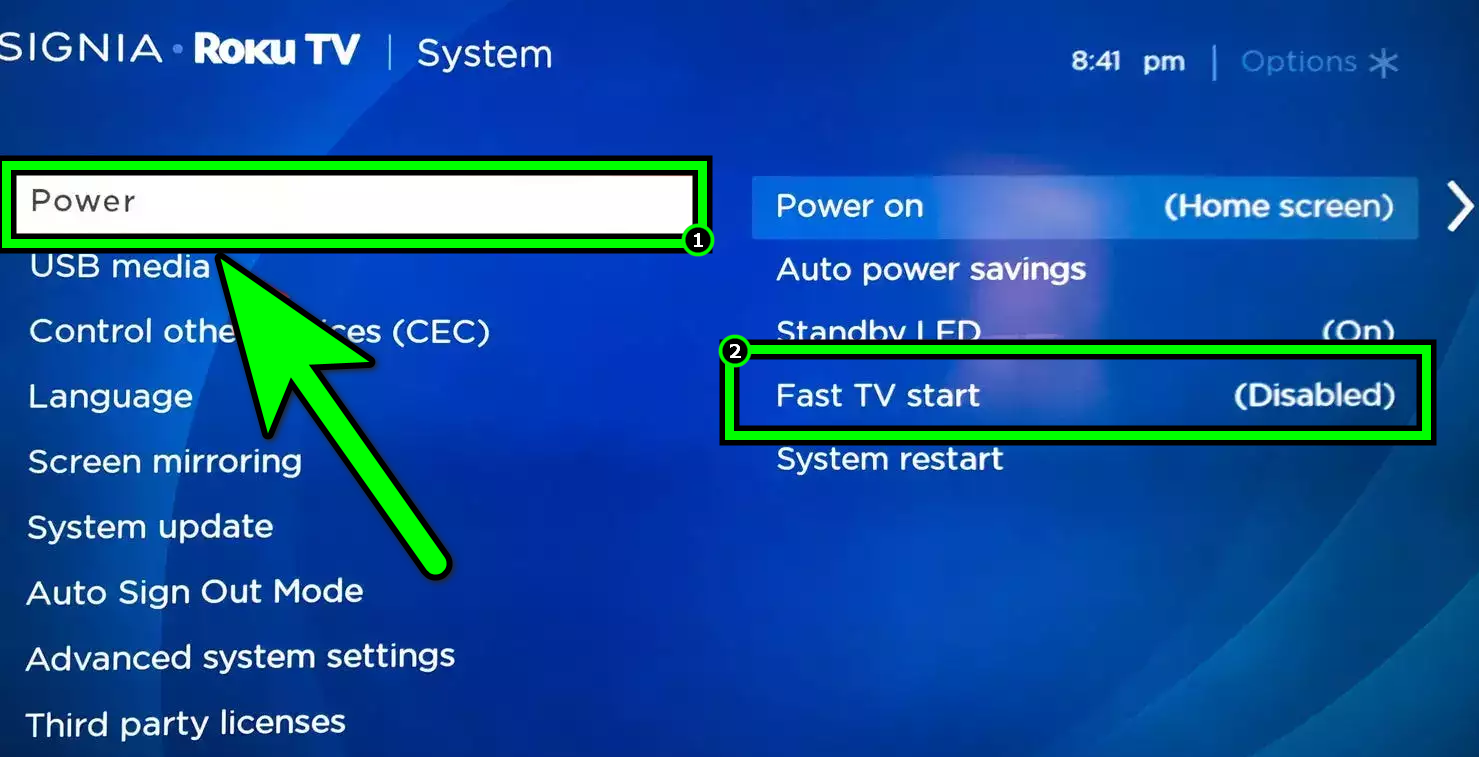
Disable Fast TV Start in the Roku TV Settings - Disable Fast Start and restart the device. Check if the Roku Airplay is working.
11. Update the OS of the Casting Device to the Latest Release
You will experience this issue if the OS of the casting device is outdated. An outdated device will fail to support the protocols required by the Roku device to display AirPlay content. You can fix this by updating the operating system of the casting device to the latest release.
For Android devices, follow similar steps and update the software from the main settings.
- Back up the iPhone, fully charge it, and connect it to a Wi-Fi network.
- Navigate to Settings > General > Software Update.
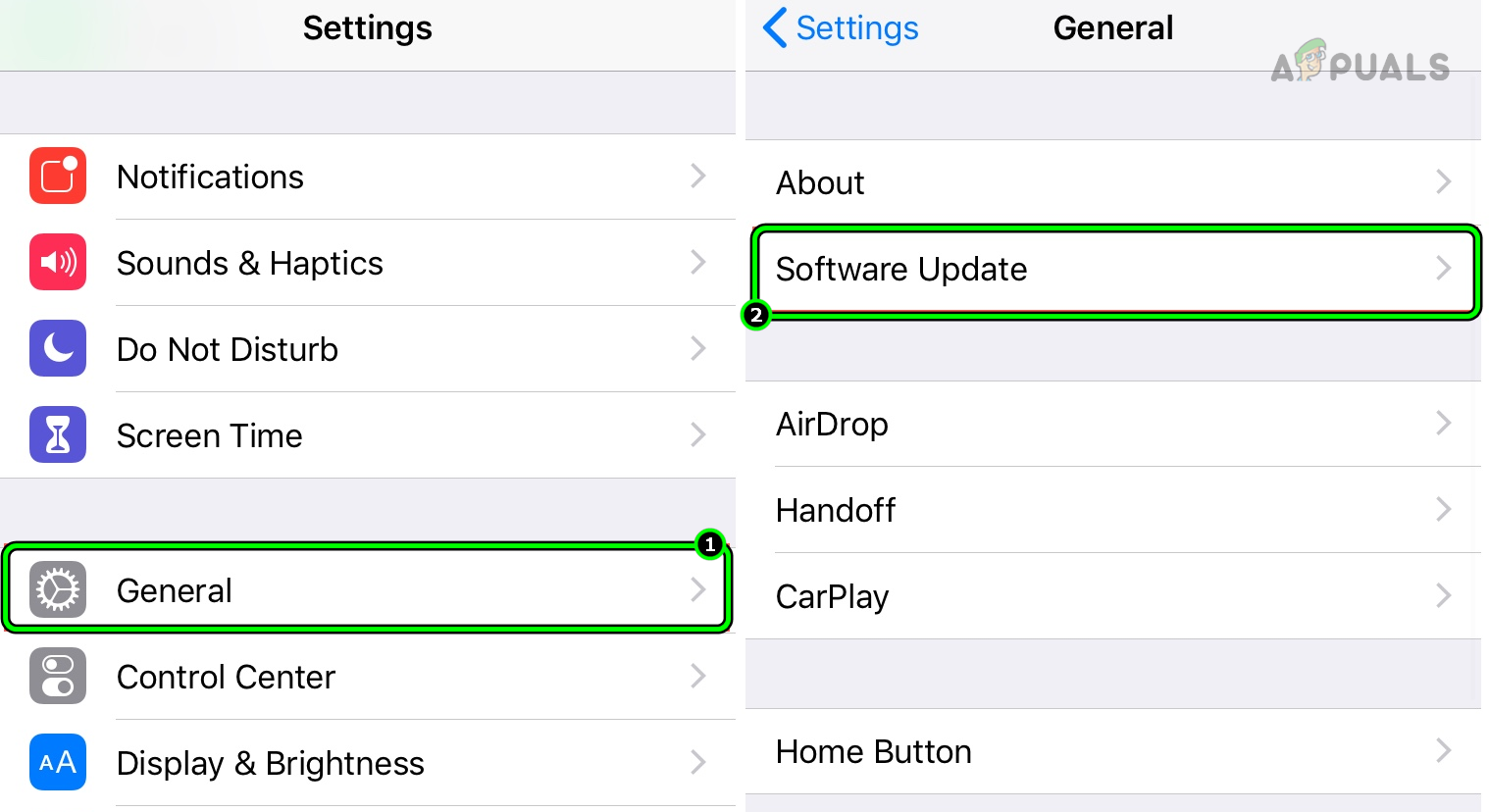
Open Software Update in the iPhone Settings - Install updates (if available) and restart your devices (phone, TV, router, etc.). See if Airplay is working on Roku.
- If this didn’t work, check whether updating your router’s firmware solves the problem.
12. Disable the Bandwidth Saver on the Roku device.
The Bandwidth Saver feature on a Roku device is used to monitor and reduce the internet data used by the device. This feature disables the internet access of the Roku after four hours if the device is not in use. A bug has been reported in the Bandwidth Saver feature of Roku that disables the device’s data access and subsequently stops its network communications. As a result, Roku Airplay will not function at all.
In this case, disabling Bandwidth Saver on the Roku device will solve the problem.
- Go to Roku Settings > Network > Bandwidth Saver.
- Select off and restart the devices.

Disable Bandwidth Saver in the Roku Device’s Network Settings - Afterward, check if Airplay is working properly with Roku.
13. Disable the Auto Power Saving Feature
The Auto Power Saving feature on your Roku device is designed to help conserve energy when it is not being used. However, sometimes this feature can disrupt Airplay. It might shut down a network module that is crucial for Airplay to function properly, causing issues.
This could be the case, particularly if you are able to use Airplay on your Roku for only about 15 to 20 minutes. To fix this, you might need to adjust the Auto Power Saving settings on your Roku device.
- Navigate to Roku Settings > System > Power > Auto Power Savings.
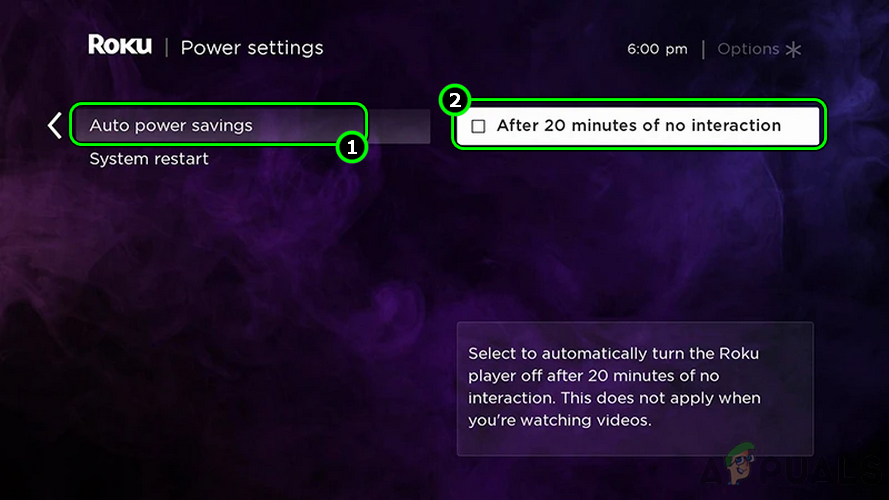
Disable Auto Power Savings on the Roku Device - Uncheck Reduce Power After 20 Minutes of Interaction and restart the devices. See if the problem is solved.
14. Change the Display Quality of the Roku Device
Sometimes, the issue with Airplay on Roku can be due to a mismatch between the display resolution of your device and the output resolution of the Roku device.
For example, if your device is set to 1080p and the Roku is outputting in 4K, this difference in quality might cause problems. To fix this, you can try adjusting the Roku’s output resolution to match the display resolution of your device. In this way, both devices will be synchronized.
- Navigate to Roku Settings > Display Type.
- Select 1080P and check if the Airplay problem is solved.
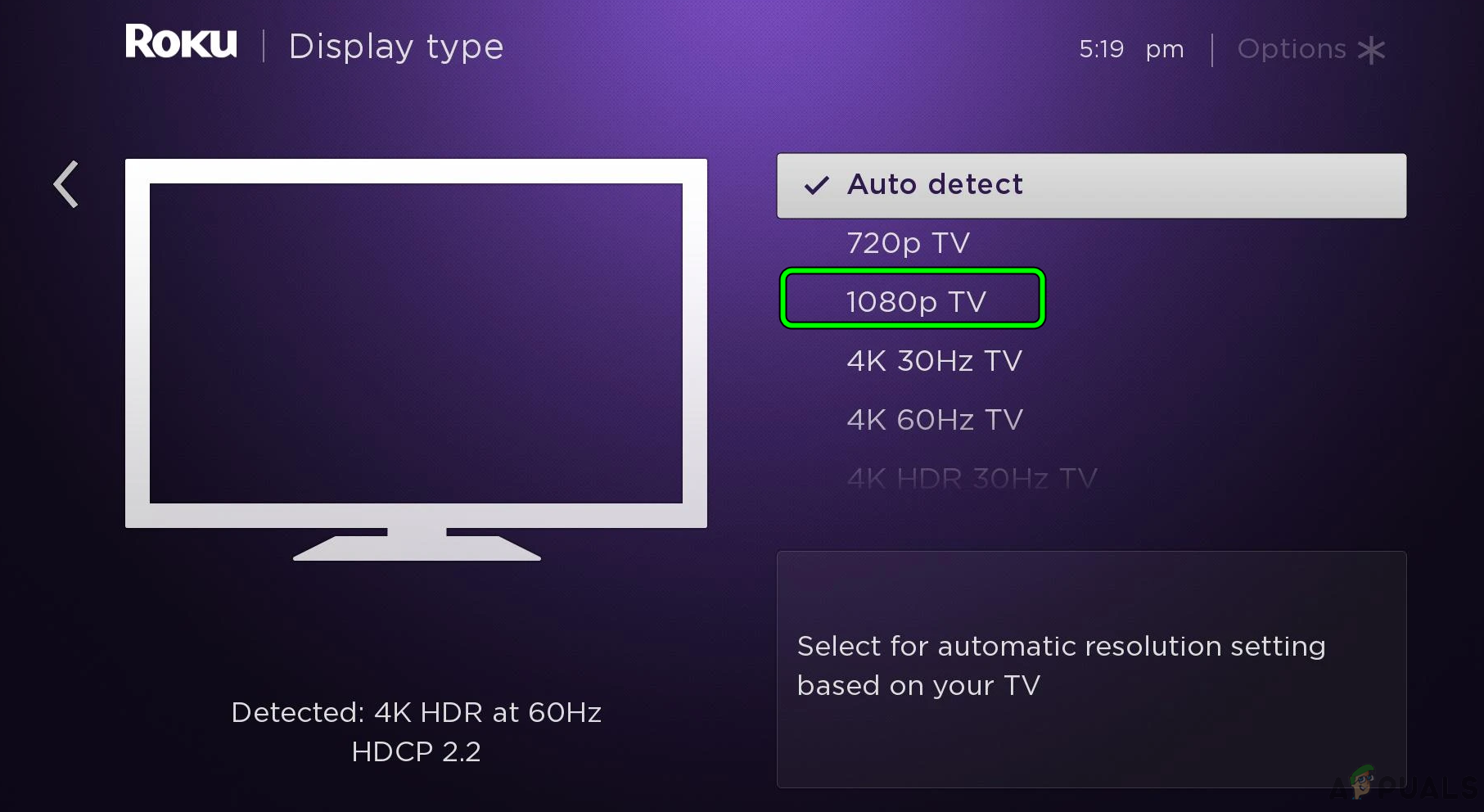
Change Display Type in the Roku Device Settings - If this doesn’t work, check if changing the Roku’s Display Type to 4K resolves the problem.
- If this didn’t work well either, try other display types one by one and check if that resolves the issue.
- If the issue persists, check whether you can mirror (not cast) from your Apple device to the Roku device.
15. Try Another Network or Network Type
Sometimes, the root cause of AirPlay issues on Roku can be traced back to the router. Certain routers, particularly those found in large-scale enterprise networks or university settings, might not natively support the AirPlay protocol.
If this is the case, one way to work around this issue is by trying a different network, such as using a mobile hotspot from a different phone. This way, you are bypassing the potential incompatibility with the original network. Just remember, if you plan to use the hotspot option, it is best to use a phone other than the one you are trying to connect via AirPlay.
- If the problem occurs on Wi-Fi, check whether hard-wiring the devices or vice versa (if possible) solves the problem.
- If the issue persists and you have a mesh-type network, connect the devices directly to the router and switch off any other access points. Check if the Roku Airplay is functioning properly.
- If this didn’t work, disconnect the devices from the current network and connect to another network (such as a phone’s hotspot). See if the AirPlay problem is resolved.
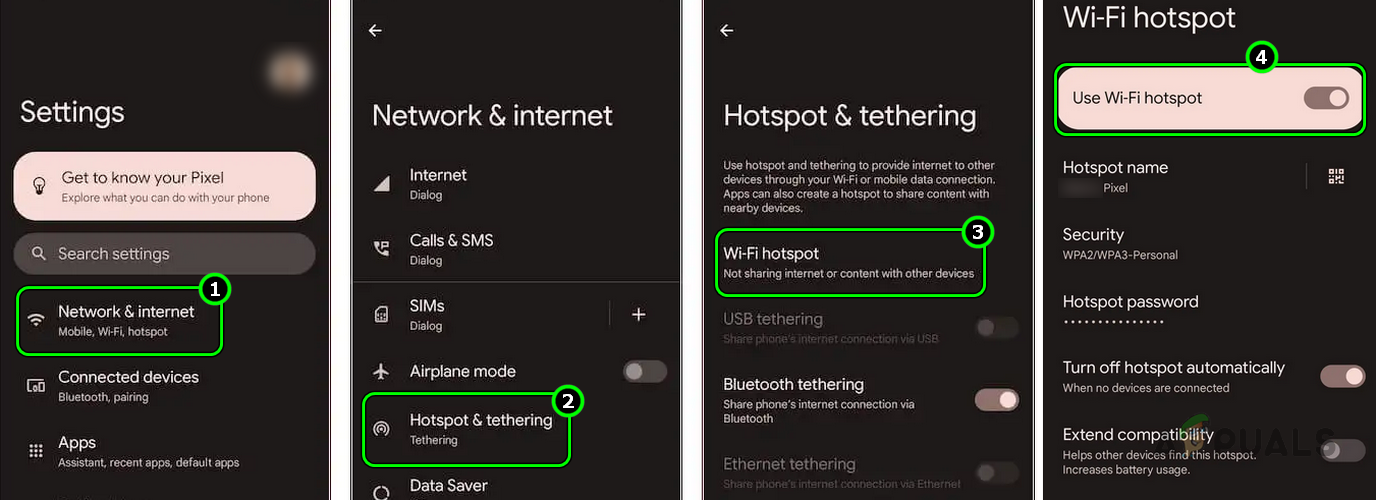
Enable Hotspot on the Android Phone
16. Disable the Guest Network of the Router
A guest network on a router allows guests to use the Internet without accessing the devices on the main network. You may encounter the Airplay issue if one of the devices (TV, phone, Roku, etc.) is connected to the Guest Network, while others are connected to the main network.
Additionally, some routers will switch to stricter network protocols when the Guest Network is enabled on the router and will cut off local network communication on the-main network. In this scenario, disabling the Guest Network on the router will solve the problem.
Here is how to disable the Guest Wi-Fi on a TP-Link router:
- Navigate to the router’s admin portal in a web browser and go to Settings > Guest Network.
- Uncheck “Guest Network.” In the case of a dual-band router, you may need to uncheck “Guest Network (2.4GHz)” and “Guest Network (5GHz).

Disable Guest Wi-Fi in the Router Settings - Apply the changes and restart the devices. Check if Airplay is working on the Roku device.
17. Enable UPnP in the Router Settings
Universal Plug and Play (UPnP) is a set of networking protocols that allow devices on the same local network to discover and interact with each other. This service is crucial for devices, like your Roku, to communicate effectively with other devices.
If your Airplay is having issues with Roku, it might be because the UPnP service has been disabled on your router. Enabling this service in your router’s settings should rectify the problem and get your Airplay functioning properly again.
To enable the UPnP feature on a TP-Link router:
- Navigate to the router’s admin portal in a web browser and go to Settings > Advanced > NAT Forwarding < UPnP.
- Enable UPnP and apply the changes.
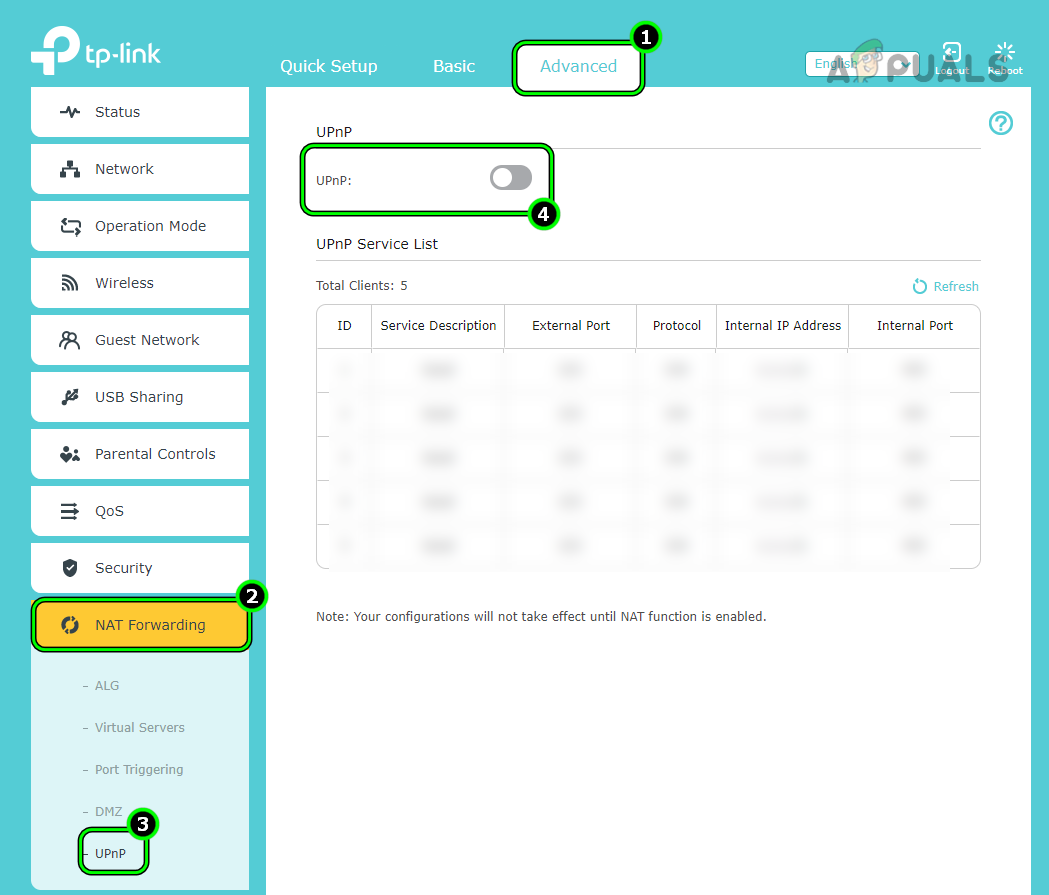
Enable UPnP in the Router’s Settings - Restart the devices and check if the Airplay feature is working properly on Roku.
18. Disable the Router’s AP Isolation Feature
AP Isolation, sometimes referred to as ‘Privacy Separator’ or ‘Communication Between Wi-Fi Devices’, is a feature found on some routers. This feature is designed to prevent devices on the same network from communicating with each other.
This can cause issues when trying to use services like Roku, which rely on devices being able to ‘talk’ to each other over the network. If your Roku is having trouble, it could be because AP Isolation has been enabled on your router.
Here, disabling the router’s AP Isolation feature will resolve the issue. To do so on a TP-Link router.
- Log into your router’s management portal using a web browser.
- Navigate to Settings > Advanced > Wireless > Advanced Settings.
- Select the network band, such as 2.4 GHz (if it is a dual-band router), and disable AP Isolation. For a dual-band router, disable AP Isolation for the 5 GHz band.
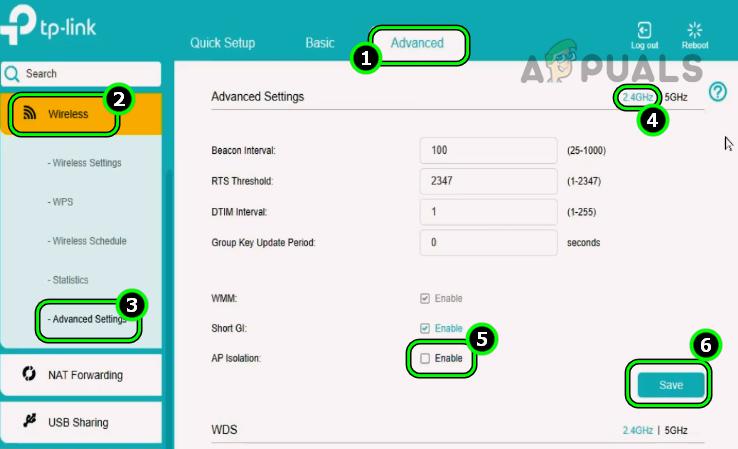
Disable AP Isolation on a TP-Link Router - Apply the changes and restart the devices (router, phone, TV, etc.). See if the Roku’s Airplay problem is solved.
19. Change the Router’s Security Authentication
Apple devices tend to have more advanced technology compared to other devices, including Roku. If the router supports WPA3 authentication and uses a mix of WPA3 and WPA2, the Apple device will connect using WPA3, while Roku will prefer WPA2. This authentication mismatch will result in the AirPlay issue.
In such a case, changing the router’s authentication to WPA2 will resolve the issue. To disable WPA3 on an Asus router, follow these steps:
- Log in to the management portal of your router through a browser.
- Go to Settings > Advanced Settings > Wireless > Authentication Method.
- Select WPA/WPA2 Personal and save the changes made.
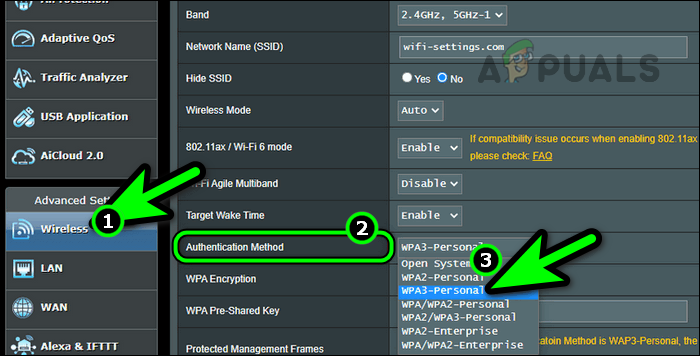
Select the Authentication Method Other Than WPA3 on an Asus Router - Restart the devices (Roku, router, phone, etc.), and check if Airplay is working normally.
20. Reset the Network Settings of the Devices
Outdated network configurations on your devices can prevent the Airplay modules from completing their operations, causing problems like the one we are discussing. To resolve this, resetting the network settings on the devices should do the trick, as the network modules will be refreshed.
Before resetting, remember to save the network configurations, such as Wi-Fi credentials, that will be required later. For example, we will show you how to reset the network settings on a Roku device and an iPhone. If you’re using a Roku stick with a TV, you will also need to reset the network settings on the TV.
- On Roku, go to Settings > Advanced System Settings > Network Connection Reset.
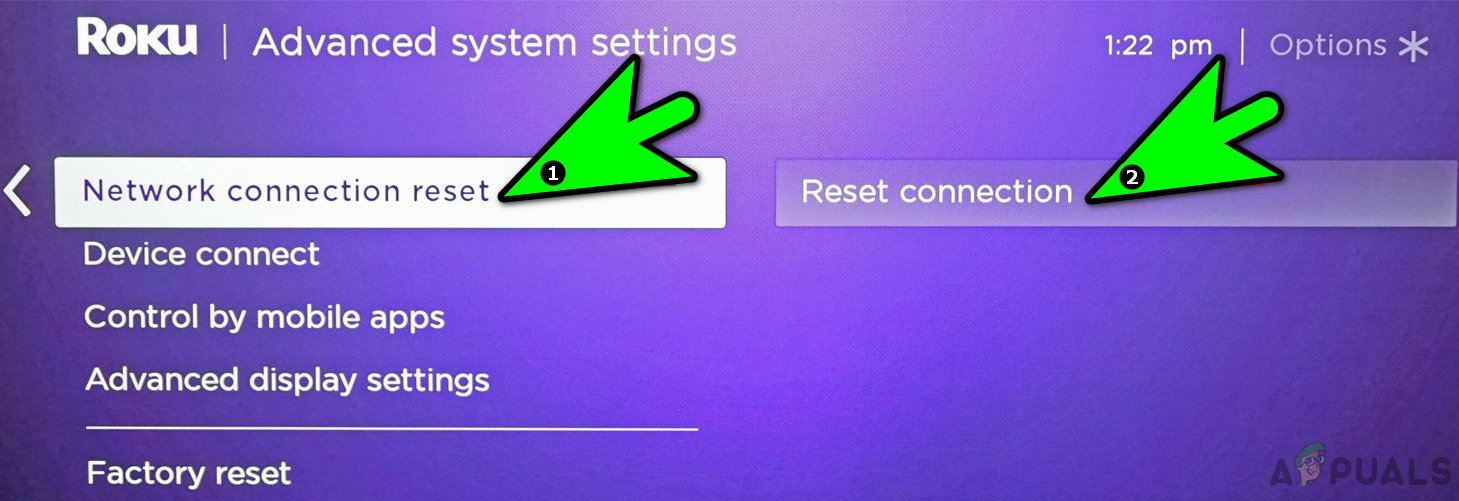
Perform a Network Connection Reset on the Roku Device - Select Reset Connection and restart the Roku device.
- Connect the Roku to your network and open the Airplay Settings on Roku.
- Enable AirPlay and check whether the issue is resolved.
- If this doesn’t work, go to iPhone Settings > General > Reset > Reset Network Settings.

Reset the Network Settings of the iPhone - Reset the network settings and restart the phone.
- Reconnect the phone to the Wi-Fi and see if the Roku Airplay is operating properly.
21. Enable only the 2.4GHz Band of the Router
Roku and other local network streaming devices often do not work with the 5 GHz bands on routers. If the Roku is connected to a 2.4 GHz band on a dual-band router, but the casting device (such as an iPhone) is connected to the 5 GHz band, the two devices will not be able to communicate, leading to the issue being discussed.
To solve this, disable the 5 GHz band and enable the 2.4 GHz band on the router, as both devices will connect to the same Wi-Fi band. To enable the 2.4 GHz band on a Virgin Media router:
- Log in to the router’s management portal by using a web browser and navigate to Settings > Advanced Settings > Wireless Signal.
- Select Enable 2.4GHz and click on Disable 5 GHz.
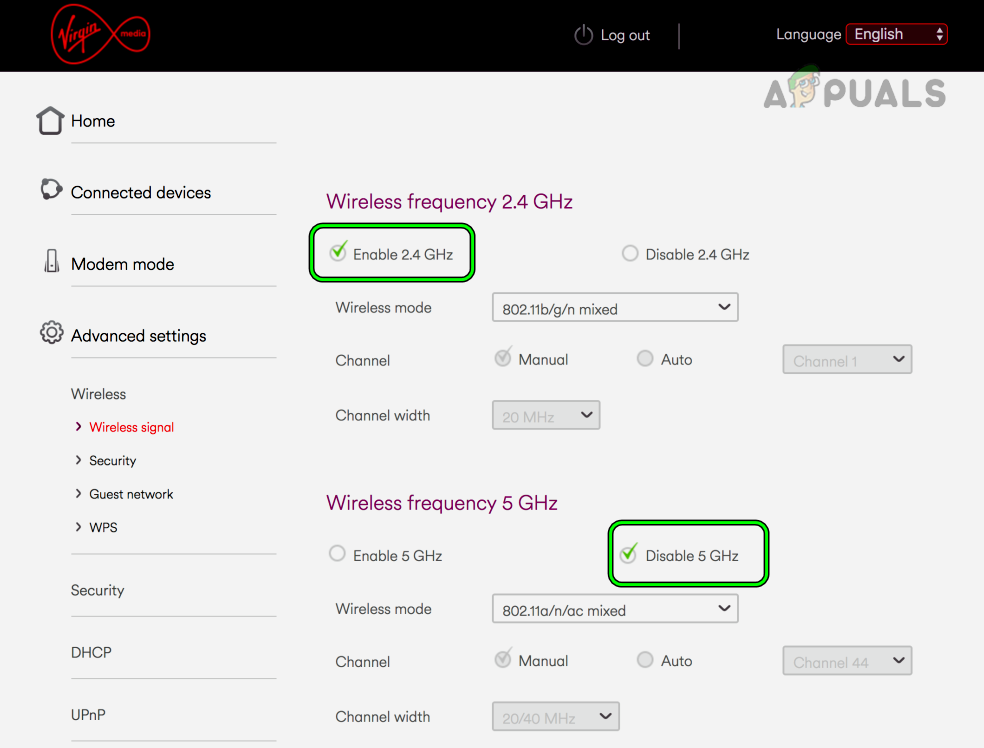
Enable 2.4GHz Band on the Router and Disable 5GHz Band - Save the changes and connect the devices to the 2.4GHz network. Check if Roku Airplay has started working.
- If this didn’t work, use a Wi-Fi analyzer app to find the best channel for your router. Set the Wi-Fi to that channel, and check if the issue is resolved.
If you need to use 5GHz, you can separate the 5GHz SSID from the 2.4GHz SSID. Connect the casting device and Roku to the 2.4GHz network, while other devices can fully utilize the 5GHz capabilities.
22. Reset the router to factory defaults.
If the latest firmware update did not apply properly to the router modules handling Airplay, the router will fail to pass the network traffic using that protocol. In such a case, resetting the router to its factory default state will solve the problem.
- Locate the reset button on your router. It may be a pinhole button on the back or bottom of the router.
- Press and hold the reset button for 30 seconds. For some routers, you may need to hold the button until the router restarts.
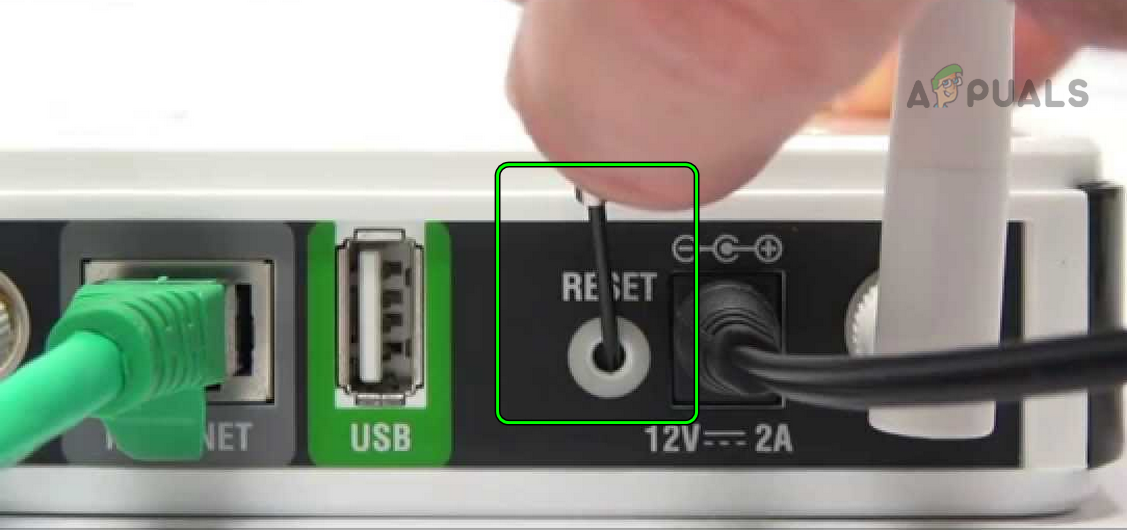
Press the Reset Button on the Router - Release the button, and once the router is properly powered on, configure it according to the OEM instructions. Make sure to disable AP Isolation and disable the 5GHz band (if applicable).
- Connect your devices, such as a phone, TV, or Roku stick, to the new network. Then, check if Airplay is working properly on Roku.
23. Reset the Roku device to factory defaults.
If none of the above methods work, you can proceed to try resetting the Roku device to its default settings. You should try this before moving on to resetting the TV device to its defaults.
- Go to Roku Settings > System > Advanced System Settings.
- Select Factory Reset. In the case of a Roku TV, you may use the option of Factory Reset Everything.
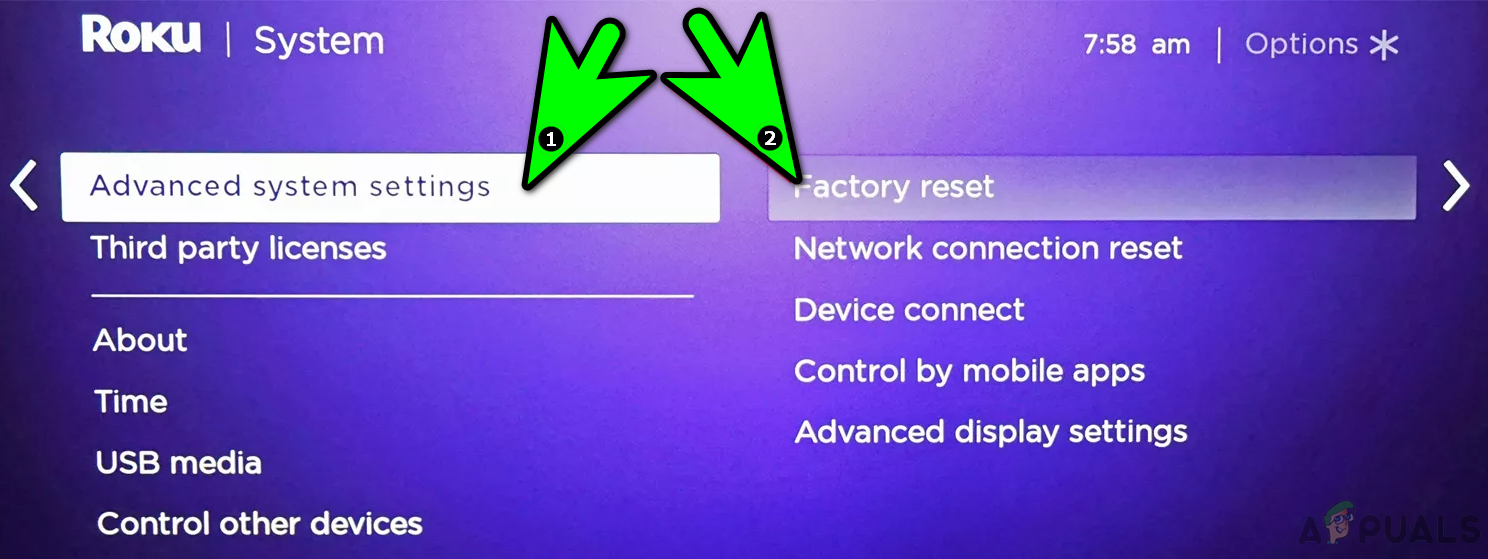
Factory Reset the Roku Device - Confirm the reset of the Roku and wait until the process is complete.
- Once completed, set up the device according to your requirements and check if the Airplay issue has been resolved.
24. Reset the TV to the Factory Defaults
Next, we will try resetting the TV to factory settings. This will rule out any improperly applied updates or firmware issues. As in the previous case, make sure to have your credentials at hand, as they will be reset.
- Navigate to Settings > General > Reset.
- Select Reset and Update or Reset.

Open Reset in the General Settings of the Apple TV - Wait until the process is complete, and once it is done, set up the TV according to your requirements. Check if AirPlay is working properly on Roku.

Reset and Update the Apple TV to the Factory Defaults
25. Reset the Casting Device to the Factory Defaults
If resetting both the router and the TV doesn’t work, the last step is to reset your mobile device. Before resetting, make sure the phone’s data is backed up and its battery is fully charged. To reset an iPhone:
- Navigate to Settings > General > Reset.
- Select Erase All Content and Settings.
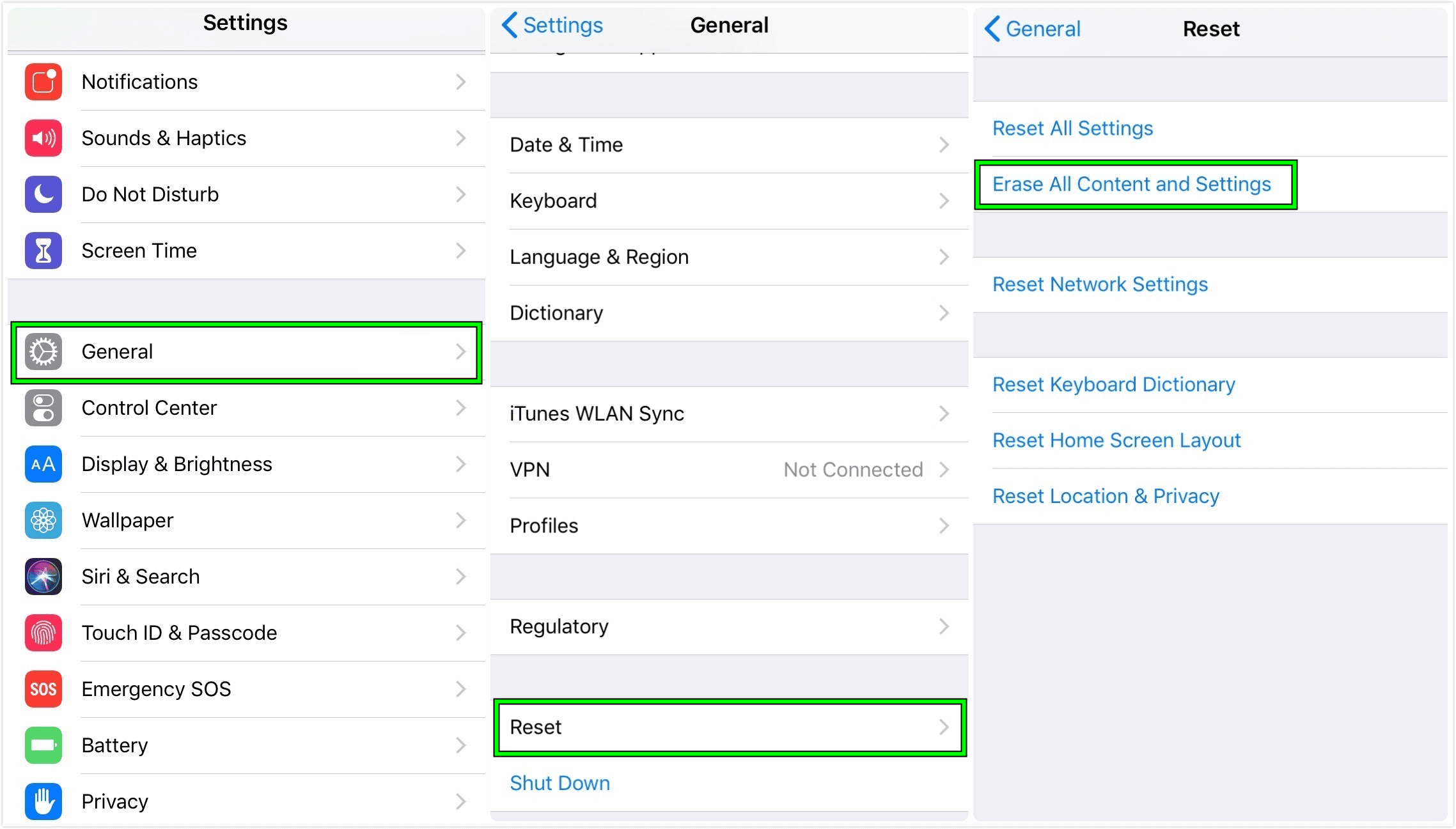
Erase All Content and Settings on the iPhone to Reset it to the Factory Defaults - Confirm the iPhone erasure and wait until the process is complete.
- Once completed, set up the iPhone as a new device (without restoring), and hopefully, this will enable Airplay to work on Roku.
If none of the above methods work, you may contact Roku support, and if under warranty, request a replacement for your Roku device.
